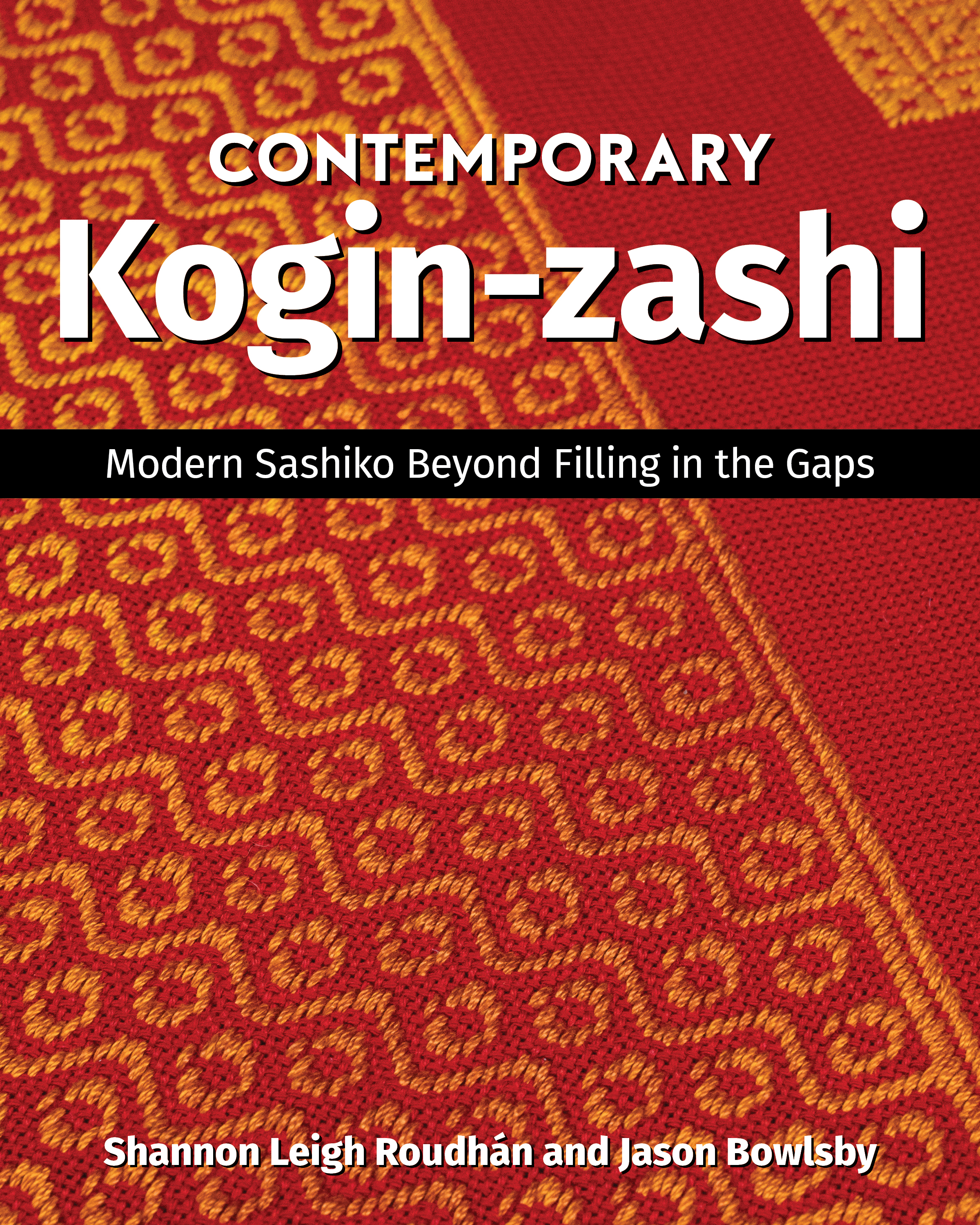Kogin-zashi Pin Cushions
Posted by Shannon Leigh Roudhán and Jason Bowlsby on Oct 14th 2022
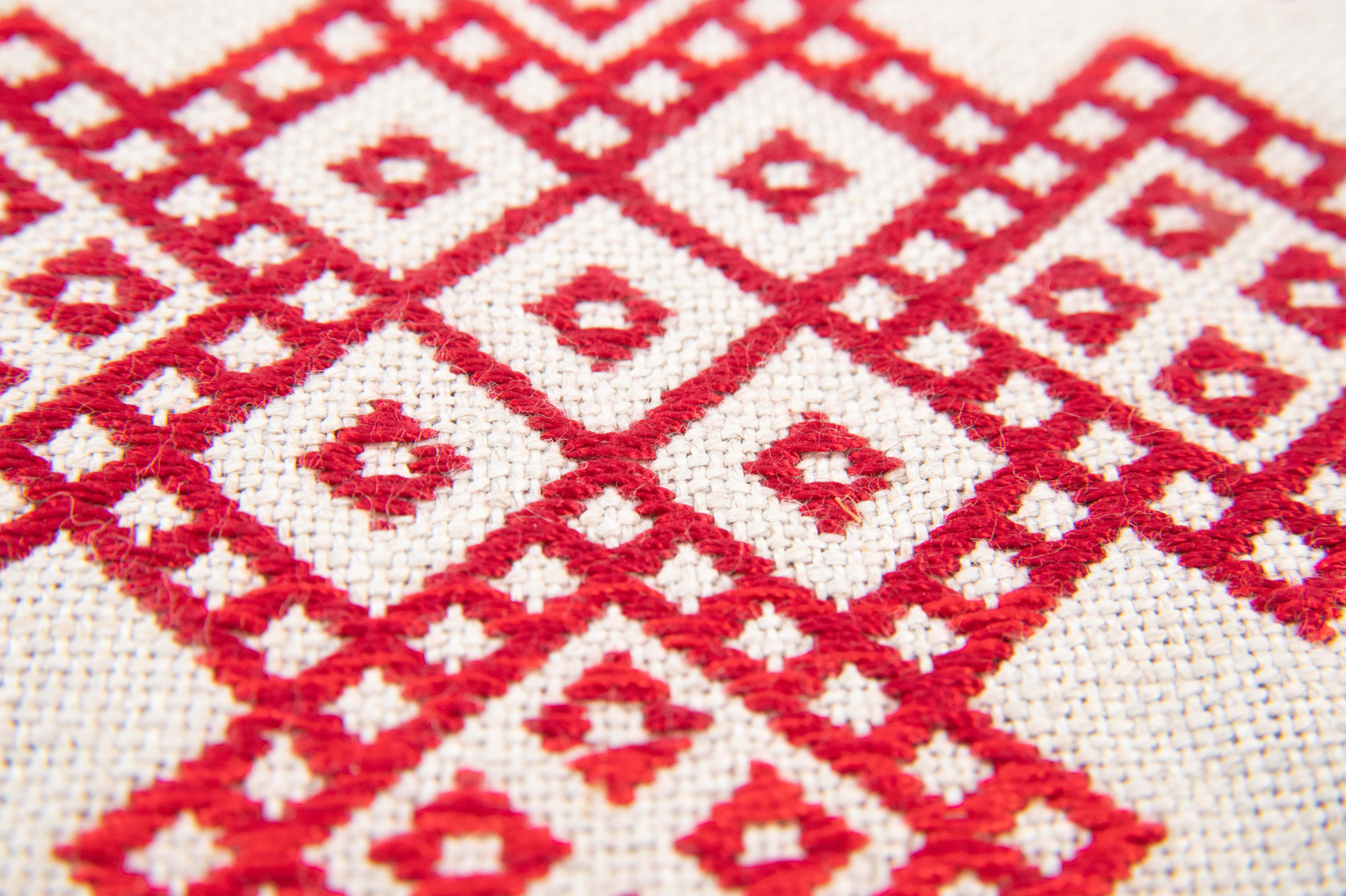
As often happens when we are writing a book, there is plenty of overrun. Specifically, we usually have a few projects that we plan on including in the book, but space is space and no matter how much we try, our editors are good at their jobs and, eventually, have to tell us “No, you can’t have fifty more pages for more projects!” So… yeah… as a result, we have started keeping a folder in our writing program called Cutting Room Floor. This is where projects, notes, research, and, sometimes, entire chapters and sections go that wander too far astray of the original book concept or that just run over. Sometimes, as in the case of our last book Boro & Sashiko: Harmonious Imperfection, there is so much material in the cutting room floor folder that it becomes the start of a new book. Those notes, research, and projects became the seeds for our upcoming book, Contemporary Kogin-zashi: Modern Sashiko Beyond Filling in the Gaps, debuting from C&T in December 2022. WOOHOO!! And, yes, the cutting room floor folder for this book had a few projects in it that we had to relegate to the folder because… well… see above. But, hey! Bonus for you all because those extra projects and charts show up in the form of workshops and posts like this one. FREE STUFF!!
In case you are unfamiliar with Kogin-zashi…
Kogin-zashi is a form of sashiko; a subject we have covered in articles and projects, lectures, and classes for the past few years. Unlike other forms of sashiko, Kogin-zashi is not used to reinforce fabrics by fastening down patches or binding together multiple layers of fabric. Instead, kogin reinforces fabric by weaving thread between the vertical and horizontal threads of loosely woven fabric. The result is a denser fabric that is stronger, more durable, offers greater protection from the elements and, without a doubt, is stunning to behold.
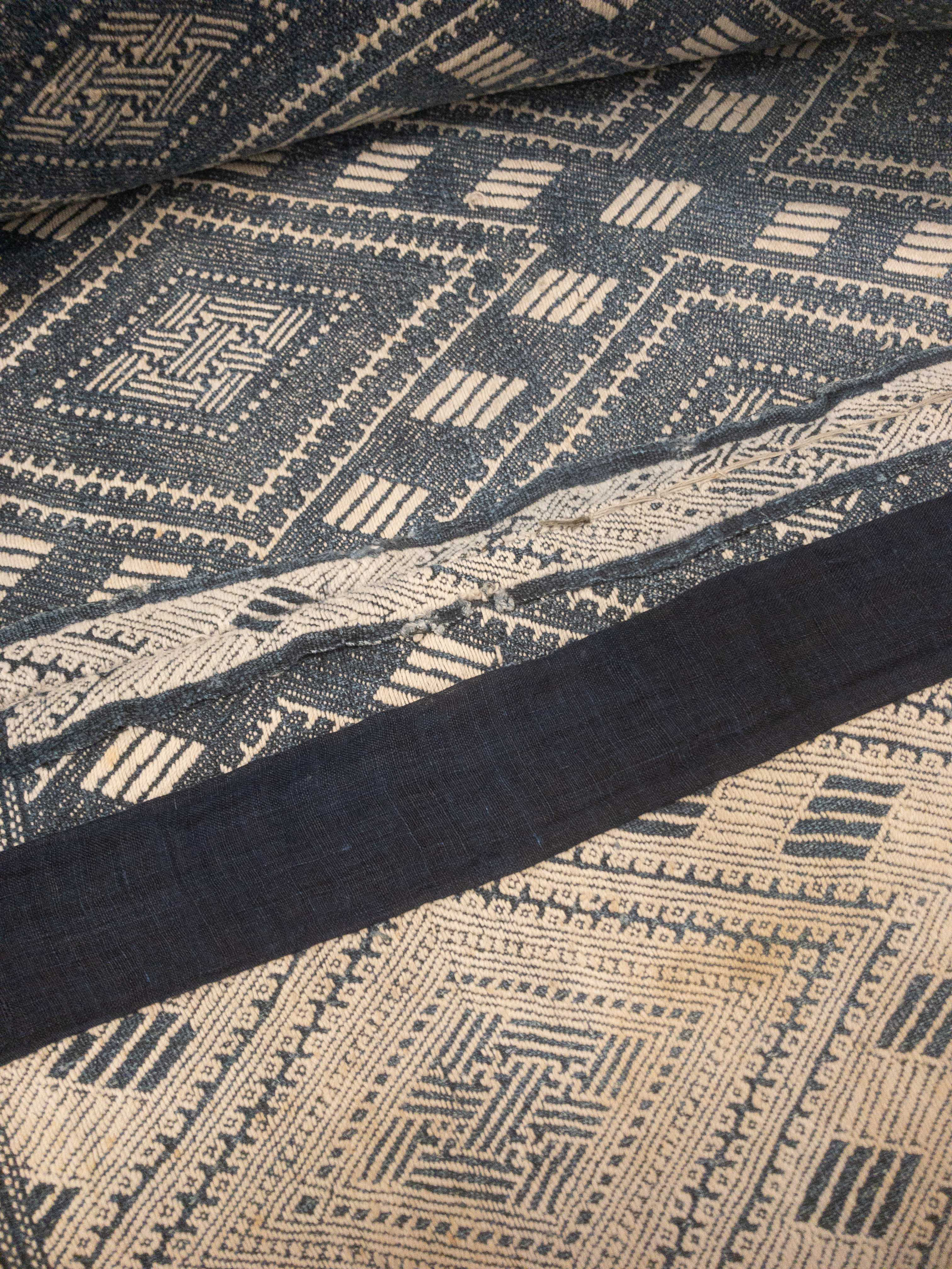
Kogin-zashi is an ancient artform with examples dating back as far as the Edo era of Japan (1603-1867 c.e.) Keep in mind that at this time in history folx were weaving their own fabrics by hand on 14" looms. Further, they were prohibited by the ruling class from wearing cotton clothing. Because of the cold climate of Japan, cotton was a traded commodity that was valued above many other fibers. As a result, only the ruling class and social upper class were permitted to wear cotton fabric as it was a symbol of their status. What this left were fibers like hemp, ramie, and a rough fabric made from mulberry bark, all of which do not produce particularly dense fabrics needed for protection from the elements. In addition, these loosely woven fabrics did not wear as long as cotton textiles. As many of us know, makers are nothing if not resilient and ingenious and these folx were no different. They exploited a loophole (RESIST!) which allowed them to use cotton thread for sewing and mending. By needle “weaving” with the cotton threads in stacked rows, they reinforced their fabrics making them more suitable for their environment. The result was a plethora of gorgeous geometric patterned fabric that we now know as the artform of kogin-zashi.
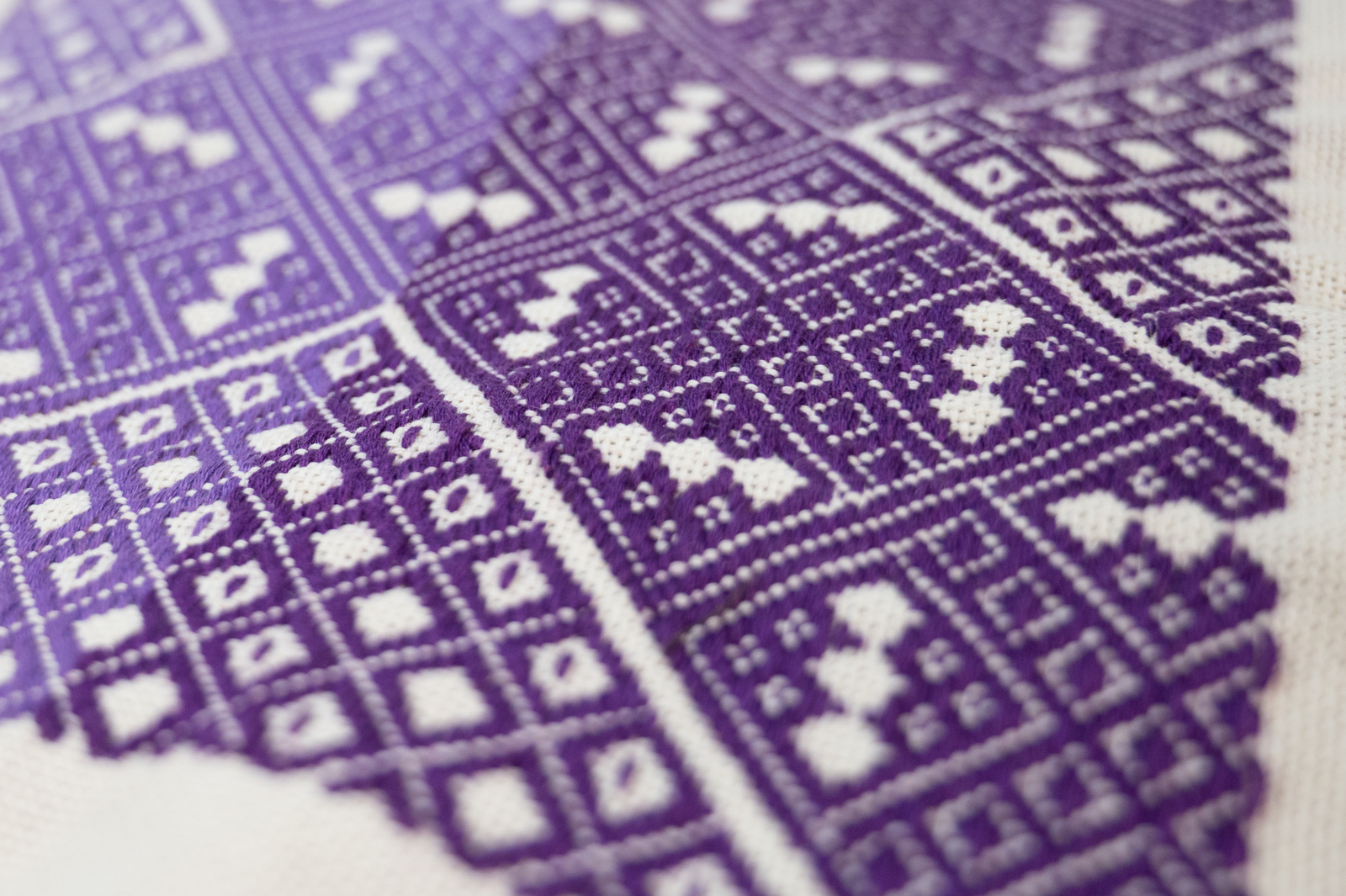
Okay… we could go on and on about the fascinating history and context of kogin-zashi and the people and circumstances that lead to this thread technique, but we won’t do that here. We did, however, go more in-depth in our latest book Contemporary Kogin-zashi: Modern Sashiko Beyond Filling in the Gaps, coming out in December 2022.
Fast forward to today and modern kogin-zashi stitchers use embroidery floss, thread, or even fine weight yarns with evenweave fabric such as Congress Cloth, Davosa, or Lugana to create large and small projects like garments, wall hangings, placemats, and… pin cushions! (Hint hint… project incoming!)
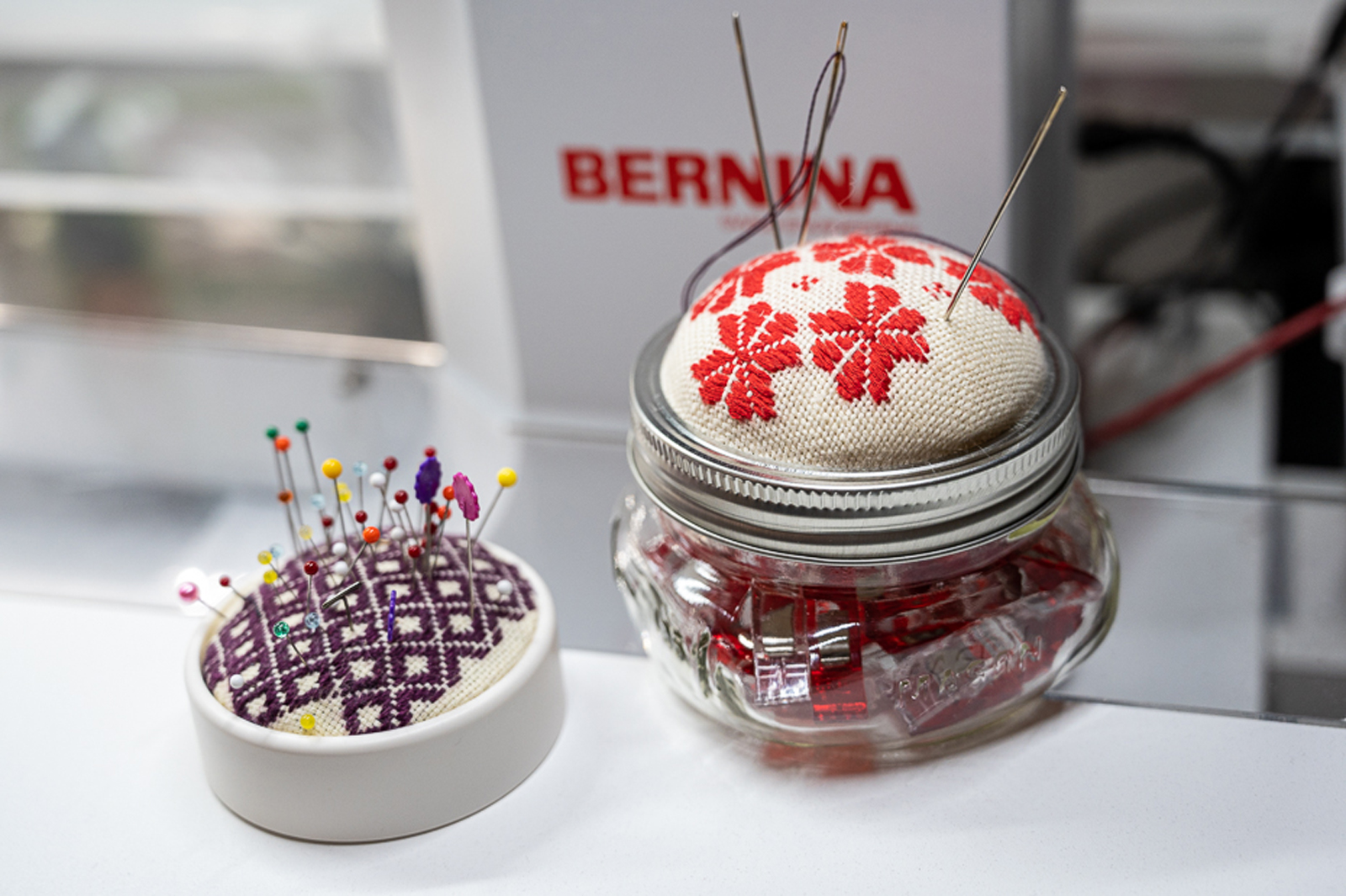
Kogin-zashi, like other forms of sashiko, uses specific tools and has a particular technique for creating the stitches that is as much a part of kogin as the actual patterns. As a brief glimpse into our upcoming book, we have created a free short video for the Creative Spark platform called This is Kogin-zashi. This video provides a quick overview of the tools and materials, and includes a brief tutorial for reading kogin patterns and the unshin (the handling of the needle) used to create kogin stitches. Once you have a grasp on the basics of kogin-zashi you will be able to dive right in and stitch up the patterns we created here for your pin cushion tops. Go ahead and go take a look at that video now… don’t worry, we’ll be here when you get back… just gonna have another coffee while we wait. (Make mine tea, thanks. ~ Jason)
Welcome Back! Let’s get on with what you all came here for… the kogin pin cushion!
Small squares of even weave fabric are the perfect place to practice pattern reading and kogin stitching. They also make great travel projects or waiting-in-line-at-the-carpool-pick-up projects. Have a little time? Make a few stitches! As you can see below, we’ve included a couple of our favorite modoco (motifs) patterned to fit within a 4’’(10cm) square of fabric. Feel free to use either of the motifs provided here for your pin cushion cover. Kogin practice and practical application… Project perfection!
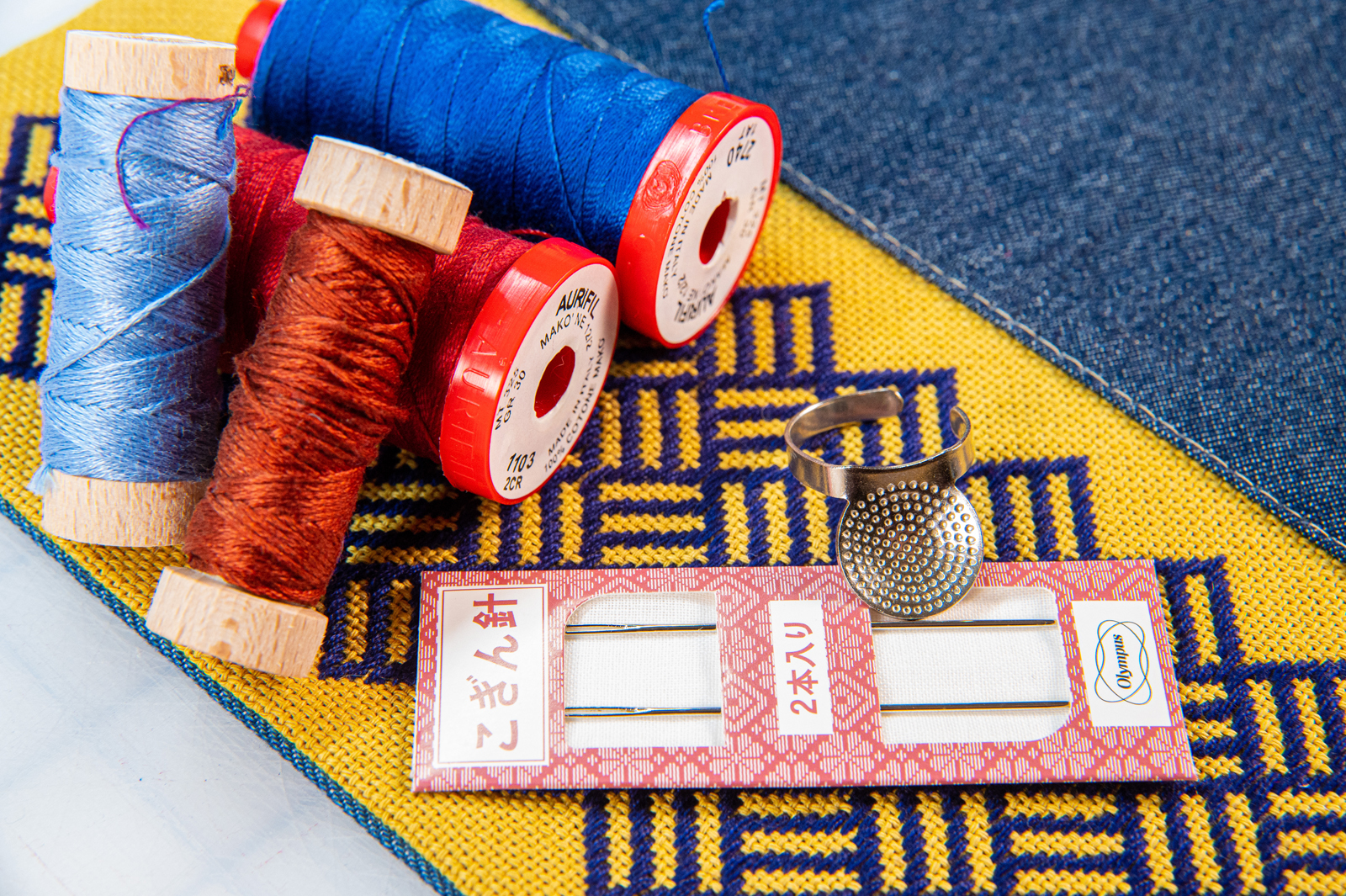
INSTRUCTIONS:
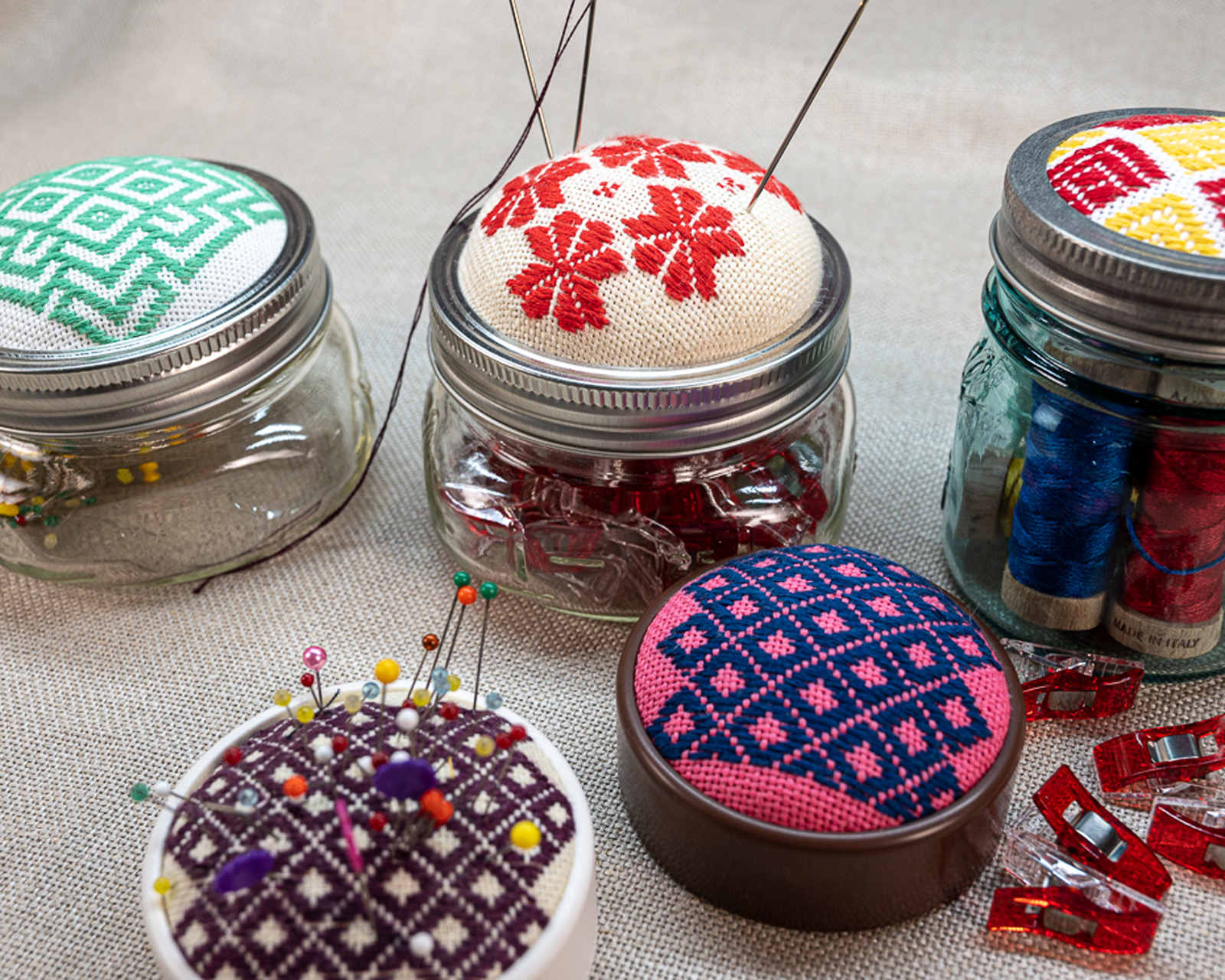
Supplies:
6" Square of Evenweave fabric like Davosa, Lugana, Hardanger Congress cloth, or Aida
Embroidery thread, 6 strand floss, or 12 weight thread
Fabric marker
Sashiko Needle or long embroidery needle
Ring thimble with plate
scissors
Various jars with flat lid and ring (large mouth or small mouth)
Poly-Fil stuffing
3" diameter felt circle
Hot glue gun with glue
In case you are interested, we sell a kit on our website will all the kogin-zashi tools you will need including fabric, kogin needles, fabric, and thread. You can find it here.
Cutting
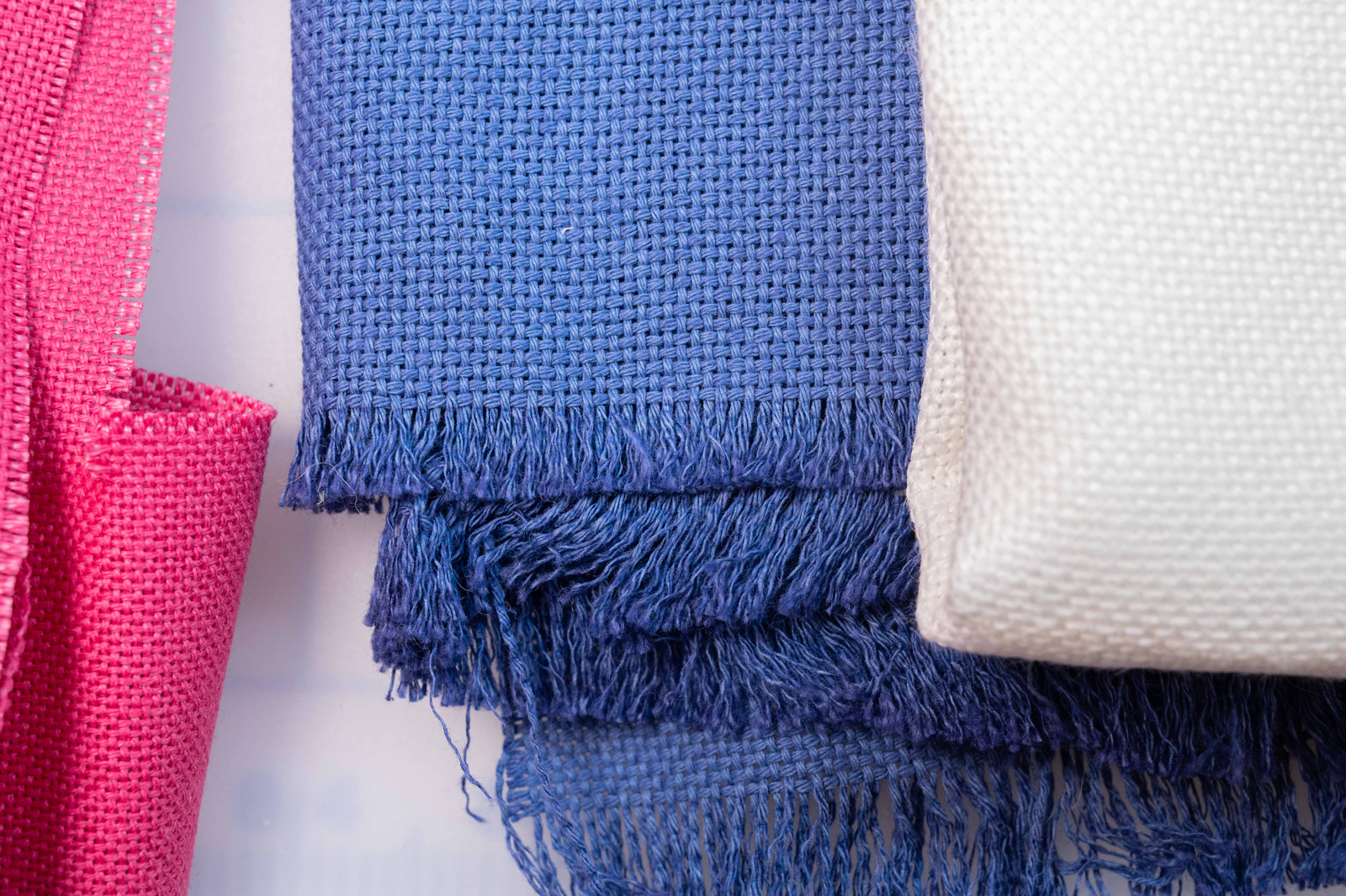
Cut a square of evenweave fabric roughly 2x the diameter of the round opening.
We highly recommend you use an overlock or zig-zag stitch around the edge to prevent fraying while handling. Evenweave fabric will fall apart if you look at it wrong…
Construction
Mark and Stitch
1. Choose Kogin pattern from the included patterns.
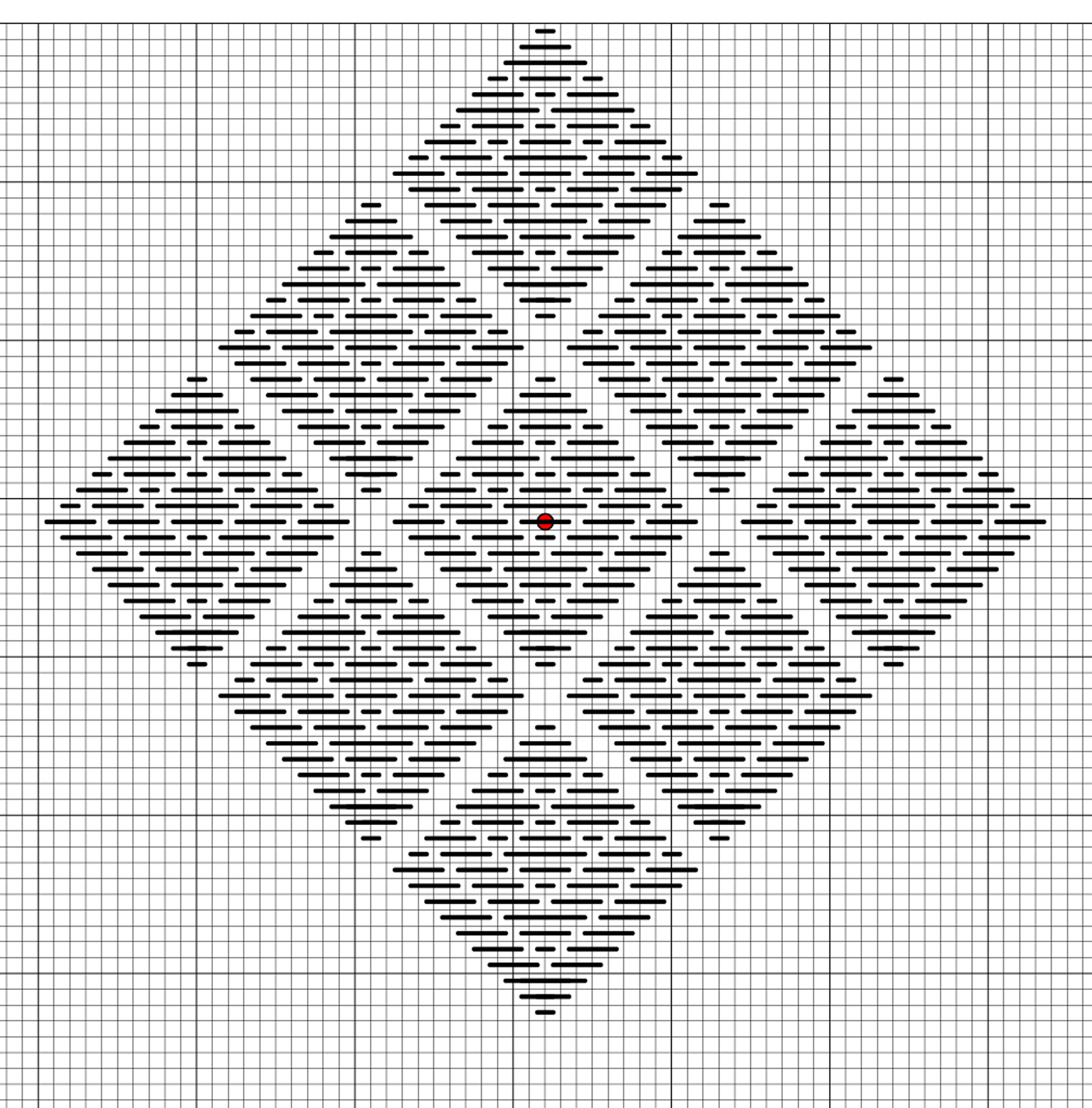
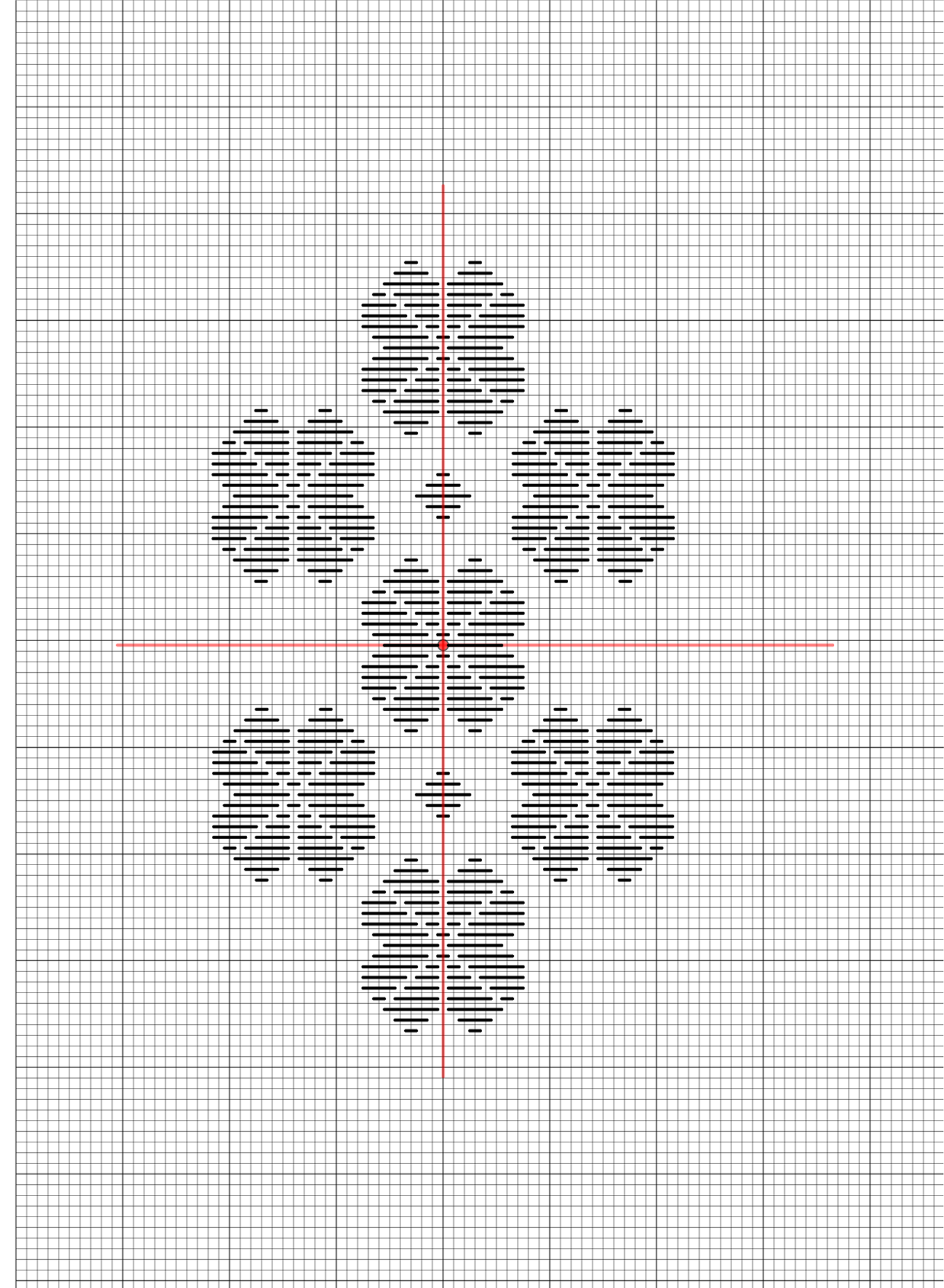
2. Fold your fabric in half one way then the next and mark the center thread as shown in our This is Kogin-zashi video.
3. Using a fabric marking pen of choice draw a circle centered on your fabric square 2"/5cm larger in diameter than your lid.
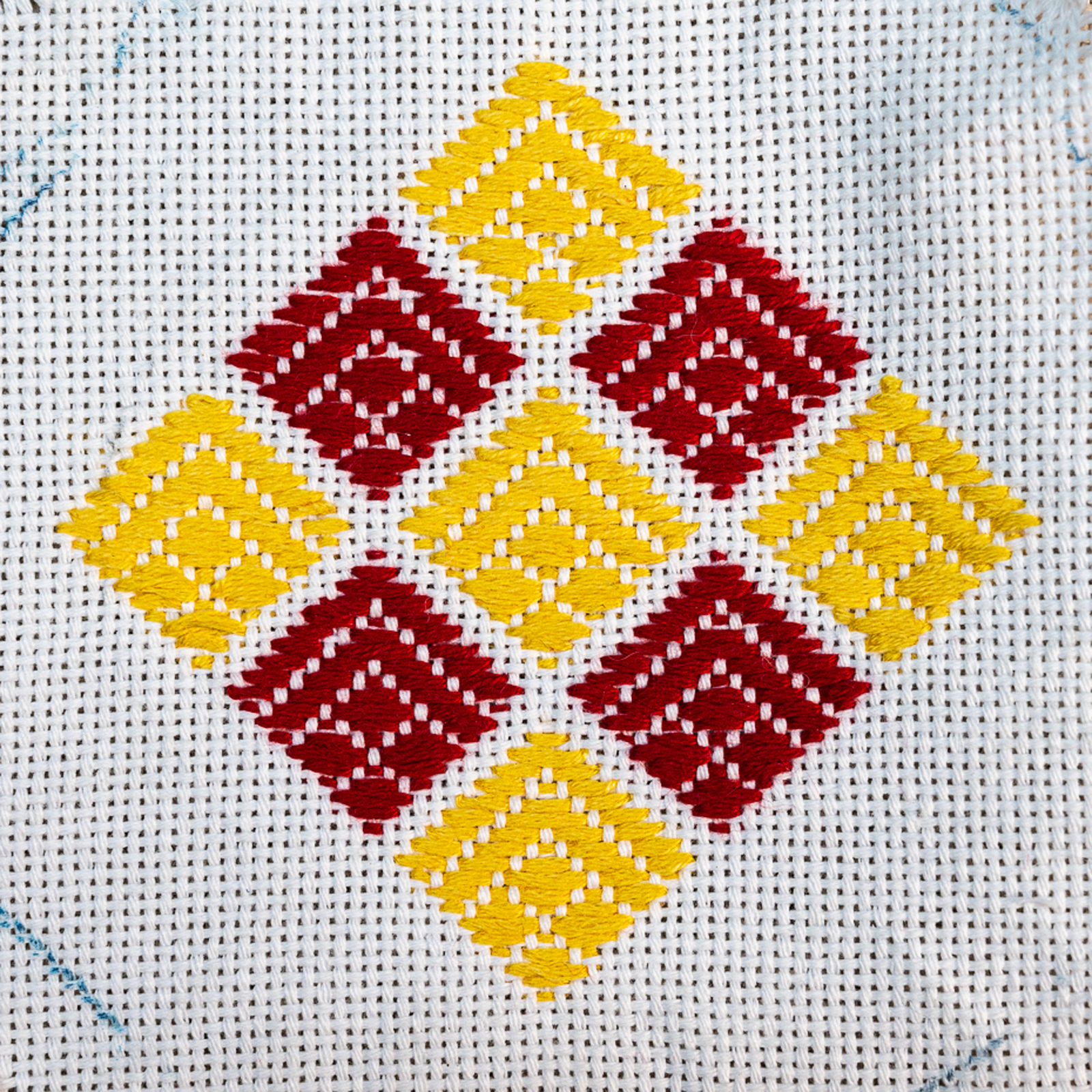
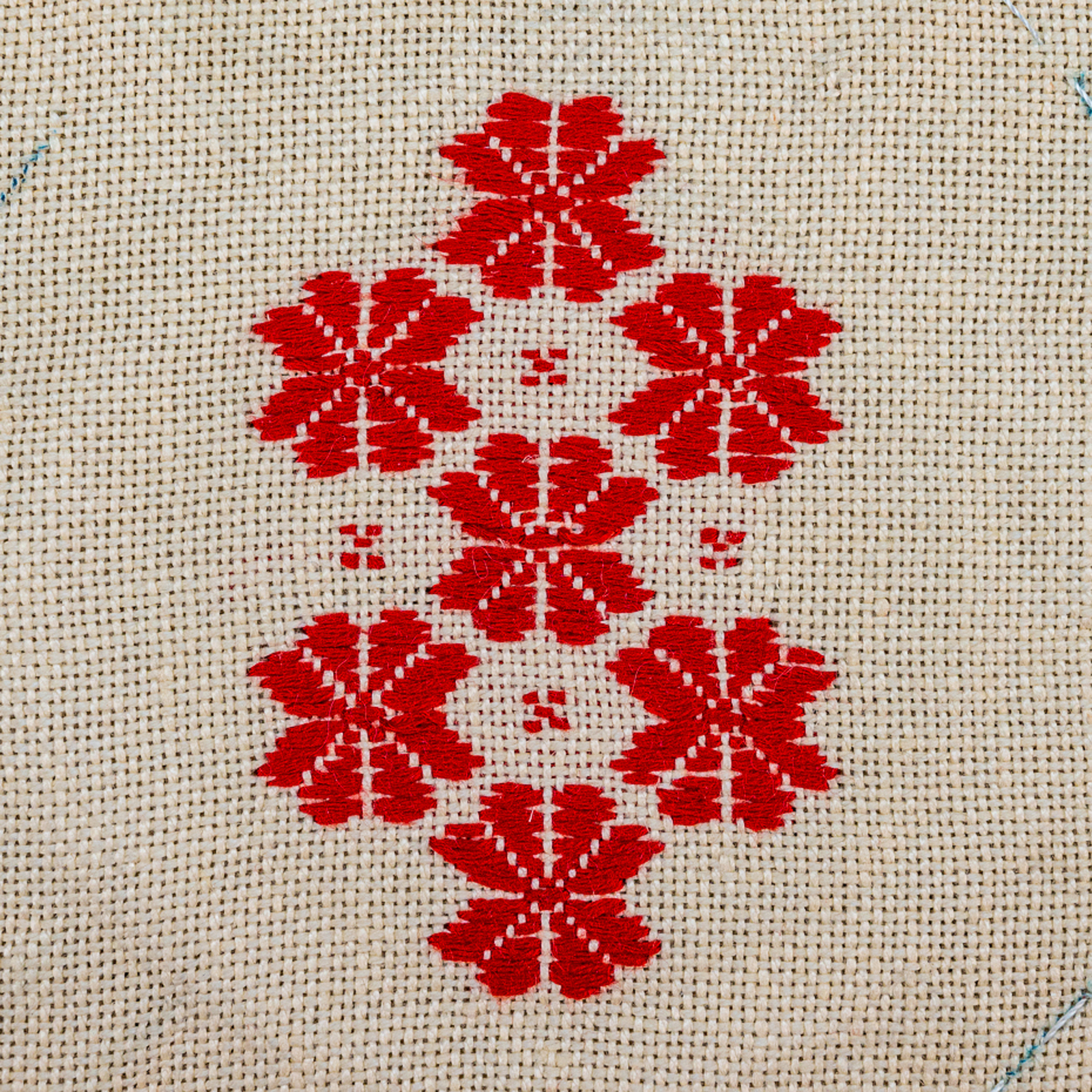
4. Stitch on!
- Follow the kogin stitch pattern starting from the center line out moving to the top.
- Return to the center line and stitch the second half of the motif.
Assembling The Pin Cushion
5. Stitch a Running Stitch around the marked circle (from Step 2 above) leaving long tails on both ends.
6. Trim fabric 1 inch outside the Running Stitch line.
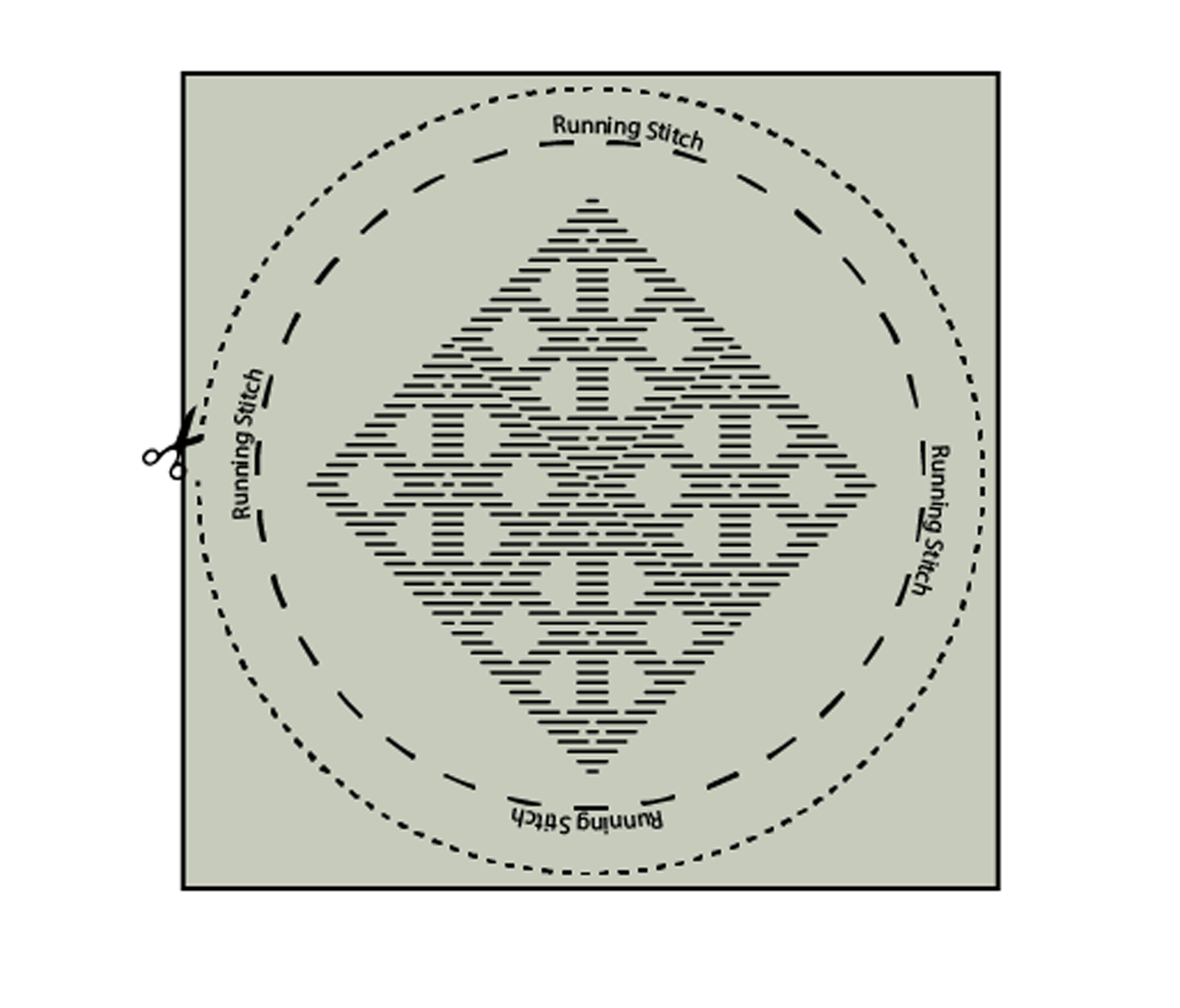
7. With Right side of stitched fabric down, place stuffing and flat lid on the center of the fabric.
8. Pull the ends of the Running Stitch thread gathering over the edge of the lid. Tie the ends together in a tight knot.
9. Hot glue the small felt circle on the bottom of the lid covering the gathered edge.
10. Hot Glue around the top of the metal “ring” of the jar.
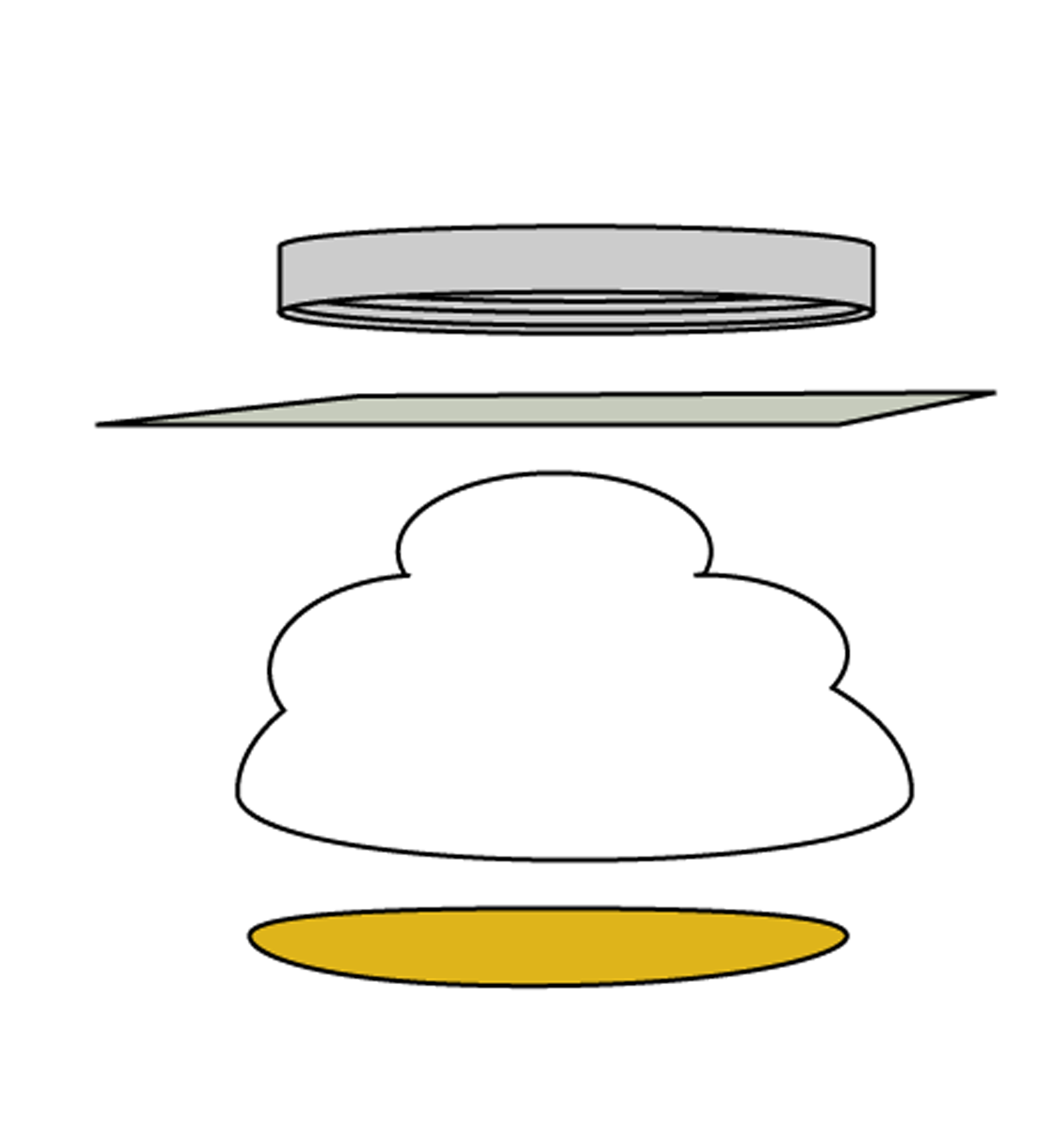
11. Quickly, but gently place the lid on the top of the ring
12. Stuff your container with extra pins, clips, or small thread spools.
13. Fill your pin cushion with some FAB pins.
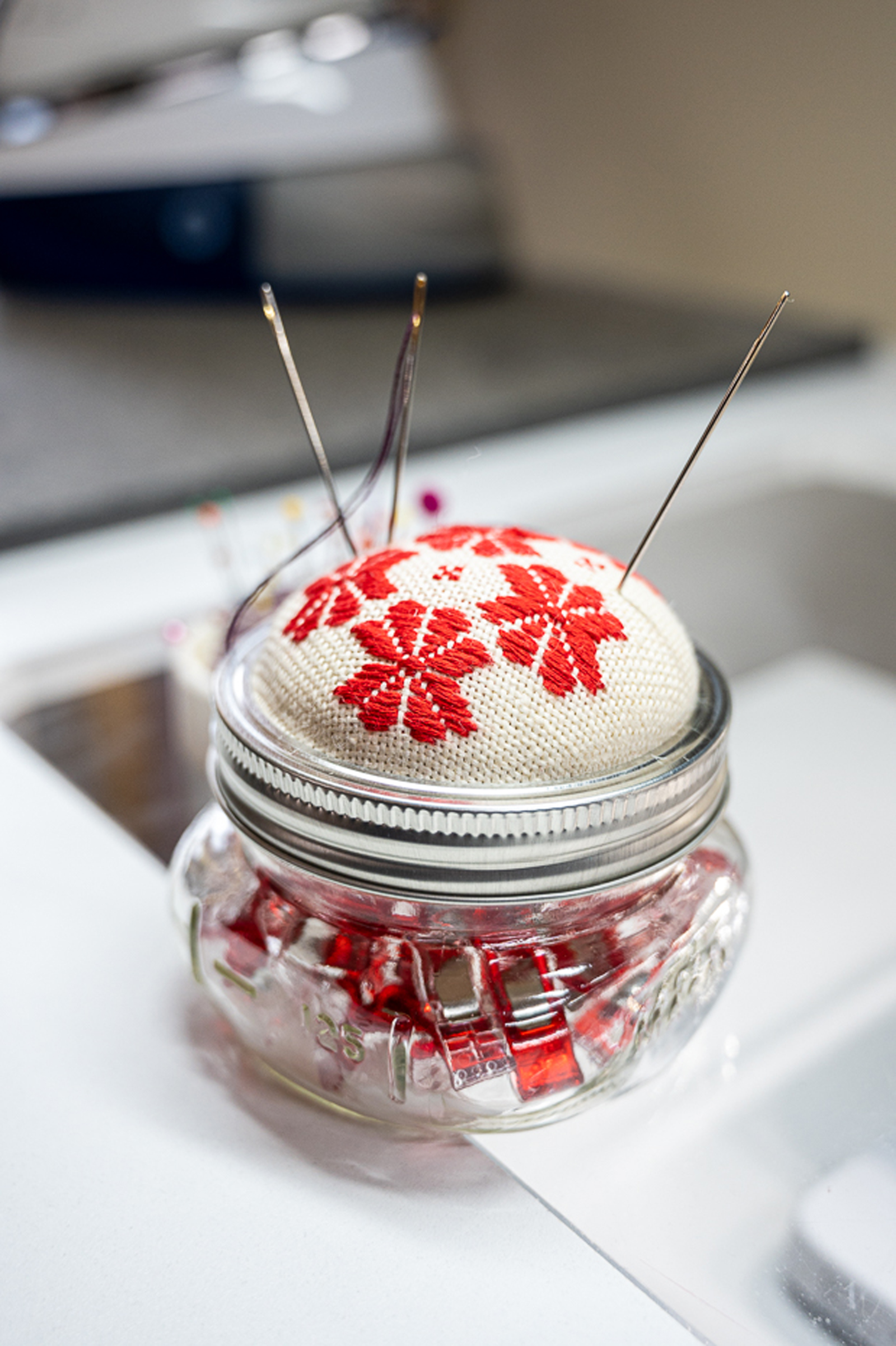
A Quick Sidebar: Any Empty Container
Empty tins, boxes, measuring cups, coffee mugs, teacups, and those cute little flowerpots all make FAB bases for creating fun and quirky pin cushions. These definitely have character! What do you have laying around? Maybe that yard sale you drive past has a small treasure that you can transform into your own unique work of pin cushion art with a little fluff and a hot glue gun!
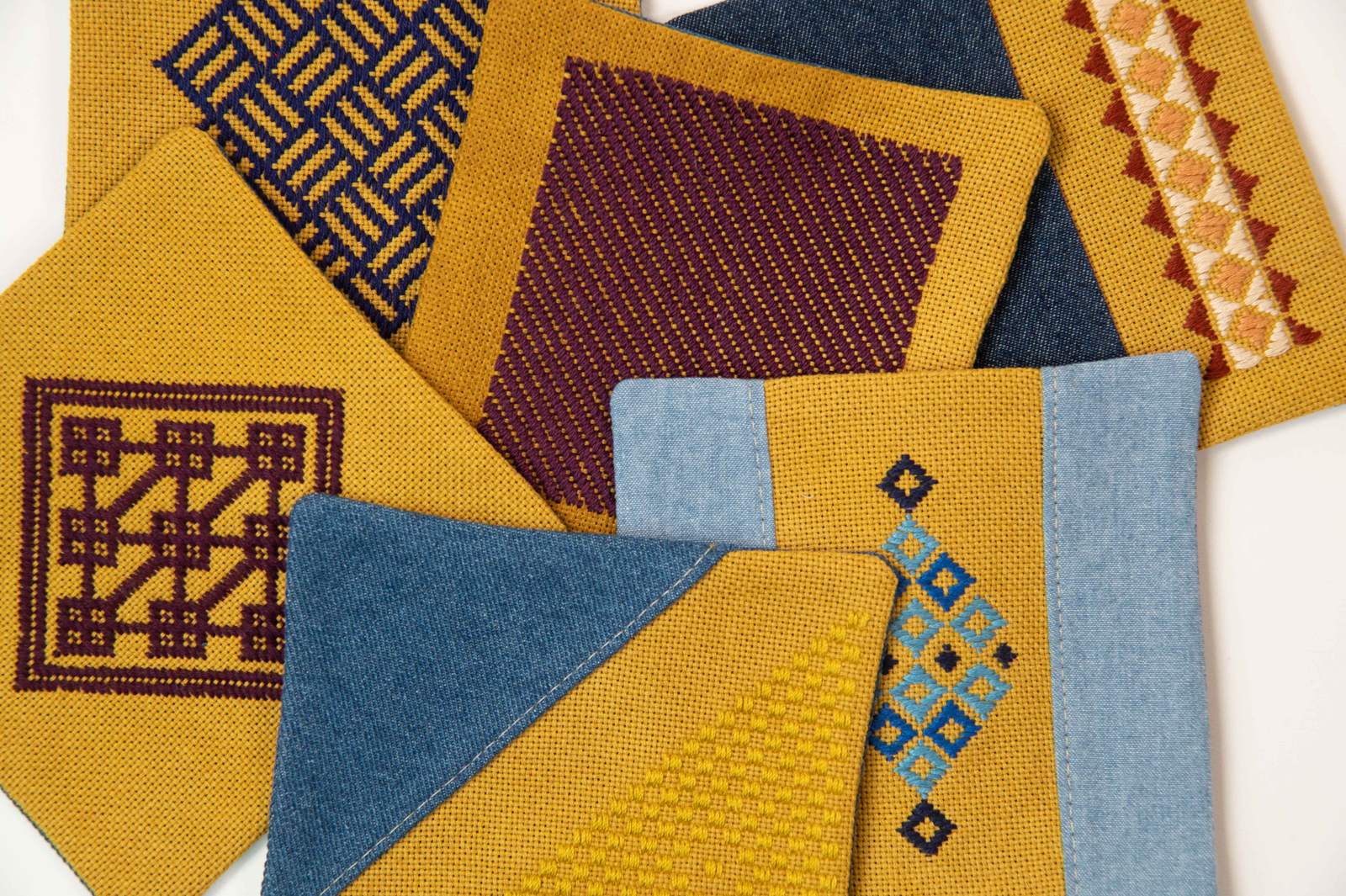
This is just a taste of the beauty and projects to come in our new book, Contemporary Kogin-zashi: Modern Sashiko Beyond Filling in the Gaps. In it we include small projects like these as well as larger projects like bags, placemats, book covers, and even garments. Look for it to drop in December, but you can pre-order your copy today on our website.
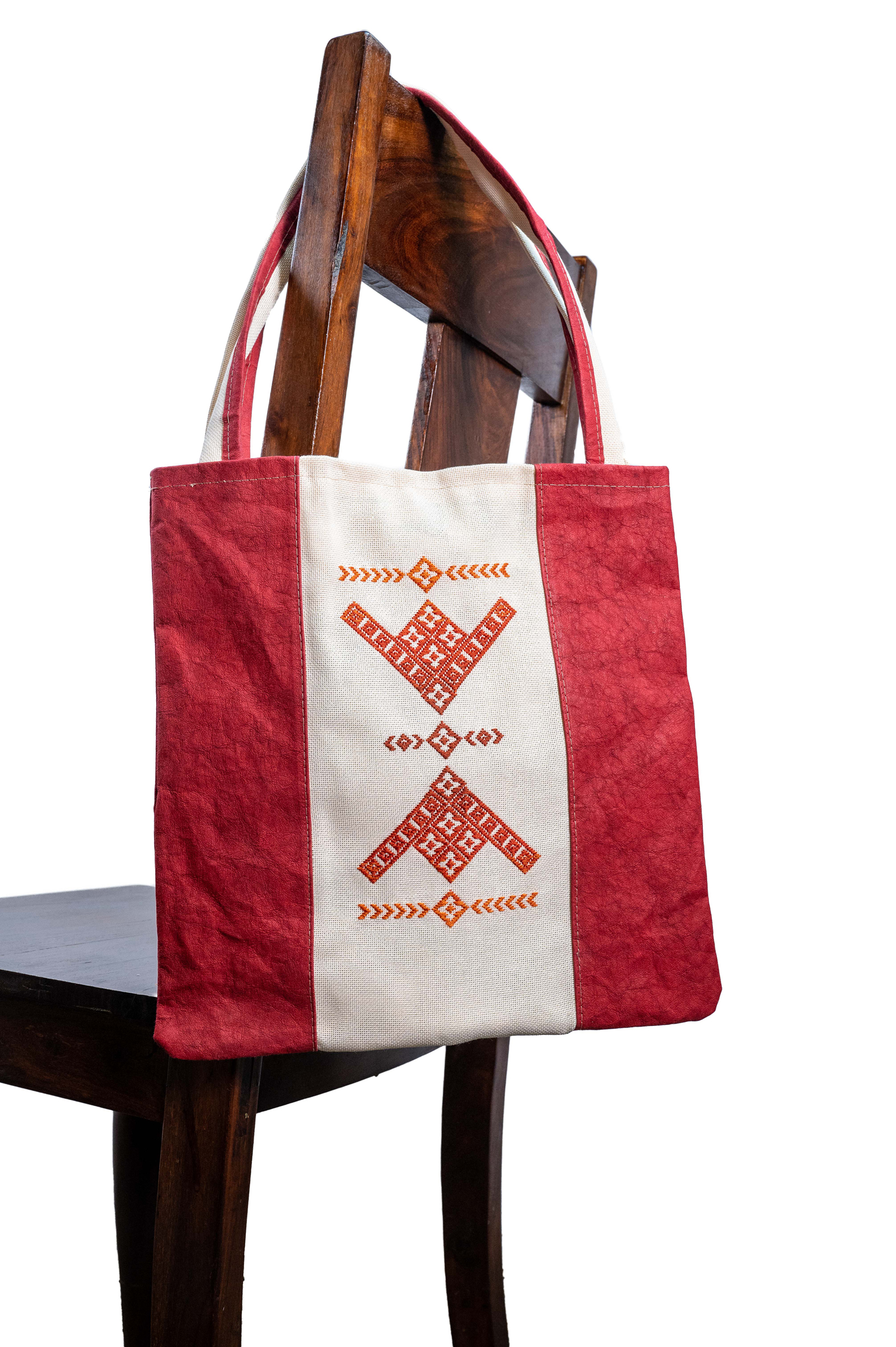
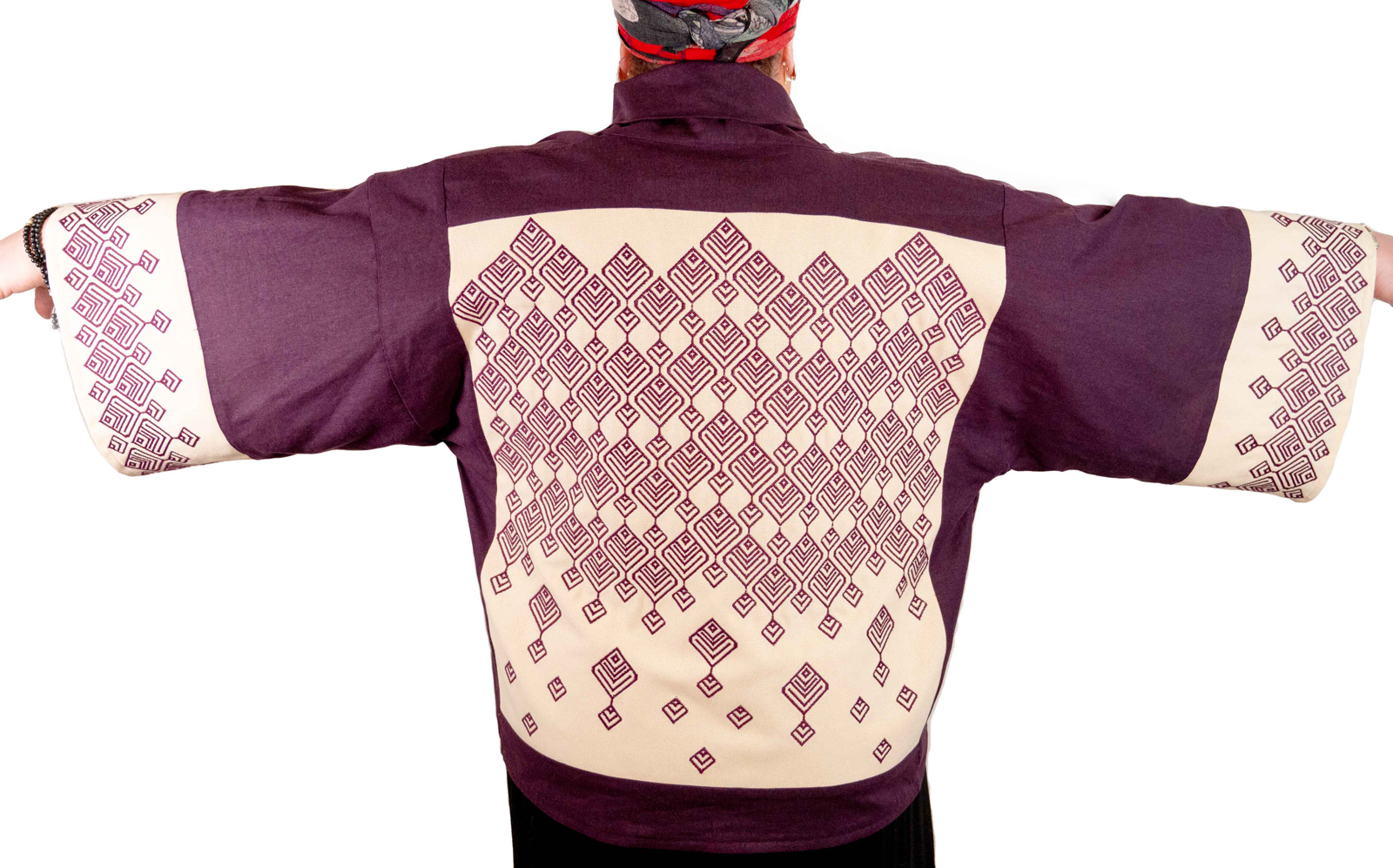
Until next time,
STITCH ON!
Shannon & Jason


